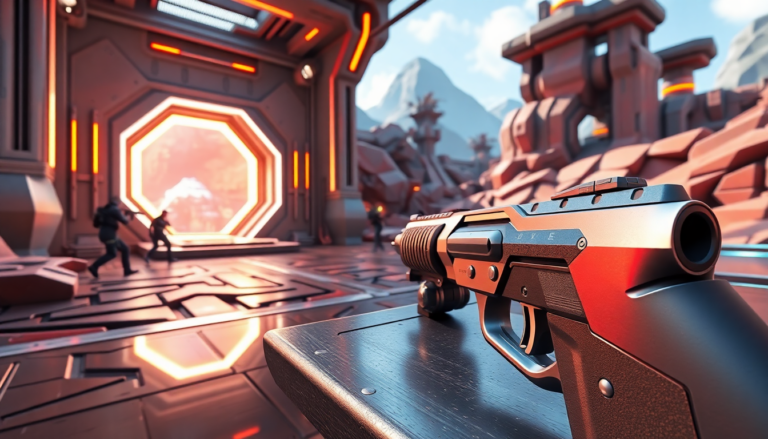Argomenti trattati
Splitgate 2, branded as a free-to-play multiplayer FPS aimed at rekindling the thrill of classic shooters, unfortunately, misses the mark. While the game introduces portals as a key feature, the overall execution leaves much to be desired. The gunplay feels reminiscent of Halo 5 but lacks the innovation you’d expect from a title that positions itself as a fresh take on the FPS genre. What happened to the excitement?
Gameplay Mechanics and Portals
At its heart, Splitgate 2 combines traditional FPS elements with a unique portal mechanic that lets players navigate maps in unconventional ways. However, does this feature truly enhance gameplay? More often than not, it feels like a hindrance rather than a tactical advantage. In fast-paced 4v4 matches, players tend to rely on straightforward gunplay, sidelining the complex maneuvers that portals could offer. With a quick time-to-kill and minimal recoil, aiming becomes the primary focus, overshadowing the tactical depth that was intended.
Despite the promise of dynamic gameplay, portals frequently become a distraction. Players quickly realize that simply focusing on shooting opponents is significantly more effective than attempting advanced tactics involving portals. Even in the newly introduced battle royale mode, where one would naturally anticipate innovative strategies to shine, the utility of portals is disappointingly minimal. It’s hard not to feel that this was a golden opportunity wasted for a feature that could have truly distinguished Splitgate 2 from its competition.
Class System and Weapon Variety
Another notable departure from typical arena FPS games is the introduction of a class system in Splitgate 2. With three distinct classes to choose from, boasting abilities like wallhacks and speed boosts, one might expect a richer gameplay experience. However, the differentiation between the available weapons feels minimal at best. The game’s arsenal, which includes assault rifles and shotguns, lacks the meaningful choices that many players crave, leaving the weapon selection feeling cluttered and uninspired. Have you ever felt the excitement of discovering a new weapon? Here, it’s hard to come by.
The maps, designed with competitive play in mind, unfortunately lack character and creativity. Most surfaces that allow for portal placement blend into the bland architecture, making it challenging for players to engage with the game’s core mechanics. While the design aims for balance, it ultimately results in uninspired environments that do little to enhance the overall gameplay experience.
Aesthetic and Monetization Concerns
Visually, Splitgate 2 presents a confusing mix of styles, lacking the cohesive and engaging design seen in successful titles like Halo. The maps resemble a half-finished project, merging elements of futuristic sports arenas with uninspired landscapes. This aesthetic deficiency is further compounded by a monetization model that feels overwhelming. Upon launching the game, players are met with multiple currencies, a season pass, and a cosmetic store bursting with overpriced bundles—does it really need to feel this cluttered?
In conclusion, while Splitgate 2 aspires to reclaim the glory of FPS gaming, it ultimately falls short in execution. The portals that could have transformed the gameplay often go unused in favor of basic gunplay. For players yearning for a return to the golden age of FPS, a trip down memory lane with older titles that respect your time and investment may be the better choice. Splitgate 2 feels like a missed opportunity, offering familiar gameplay without introducing anything truly innovative to the genre.

